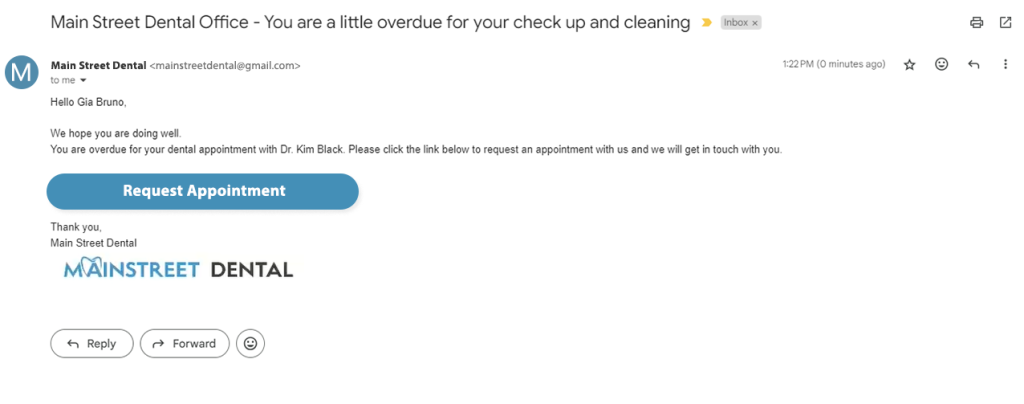Research has shown that it is approximately five times more costly to attract and acquire new patients to your practice compared to retaining patients. Some research indicates that this figure is much higher, while other articles challenge the figure, the fact remains that retaining patients is a more effective and less costly way to ensure stable revenue compared to acquiring new patients. Patient retention is particularly crucial in the dental industry since patients only tend to leave their existing dental provider when an issue arises, such as:
- They had an unpleasant experience (48% of respondents in a survey indicated poor “bedside manner” influenced their decision to switch dental providers)
- This can include long wait times, bad experiences with any team members, difficulties with changing appointments, and more.
- They are moving out of the area and want to find a dental provider that is closer
- They switch to a dental office that offers more services (e.g. in-practice specialties such as orthodontics, periodontics, or a lab for dental prosthetics)
- Whether it’s a matter of working with other providers to offer more services or being part of a community network of providers to service patients in the area, having a competitive edge that differentiates your practice from others in the area can help you retain patients.
While some circumstances are out of your control (such as patients relocating), you can control the quality of service your practice provides to patients. This will prevent unhappy patients and ensure that your patients keep coming back for routine dental treatment. We have compiled a list of some of the things you can do to enhance your patients’ experiences and improve your patient retention rate.
1. Provide a platform for patients to provide actionable feedback

Performing surveys at regular intervals, such as annually, is an effective method of gathering data on patient experiences in your practice. There are various secure survey platforms that your office can utilize to easily set up your survey questions. Once your survey is prepared, consider using ABELDent’s broadcast messaging feature as an easy way to send the survey link to your patient base. You can set up a customizable message template in your ABELDent system and update the survey link and message text each time you want to send an updated survey. Once you are ready, simply send a mass email or text message with a click of a button to all your patients who have consented to receive communications from your office.
Having a KPI monitoring process in place (such as ABELDent R&A) can help you identify areas for improvement, and utilizing patient surveys for feedback can help you come up with actionable solutions, whether related to team training, etiquette, practice scheduling processes, etc. The most important part of patient surveys is the action you take afterwards. The best way to improve your patient retention rate is to ensure that your team has the resources and buy-in to come up with a realistic plan to address a weak point.
2. Utilize review management software to compile positive reviews and keep negative reviews from going public
In addition to review management software’s main advantage of encouraging positive online reviews, some systems will also direct negative feedback to your team rather than online. ABELDent RMS (Reputation Management Service) does this by sending individuals who click below a certain rating (e.g. clicking 2 stars instead of 5 stars) to an internal form that goes to your office instead of being posted online. Oftentimes, unhappy patients simply want an outlet to voice their concerns. They want to ensure that your practice listens to their feedback and takes steps to improve their experience. Providing a place for unhappy patients to provide honest feedback is valuable for everyone involved, especially your practice. A bad patient experience is an opportunity to address the root cause of the issue, whether it was due to miscommunication, a team member with poor bedside manner, a scheduling error, or something else. Learning about your office’s opportunities for improvement first-hand from unsatisfied patients gives you valuable information your team can act on.
3. Utilize patient self-scheduling to save everyone’s time

Patient self-booking is a big draw for a lot of healthcare services, including dental practices. Offering patients a self-booking option on your practice website can not only entice existing patients who may regularly use self-booking in other aspects of their lives but can also attract new patients who value quick and easy scheduling processes. If your practice does not yet offer self-scheduling, patients may be tempted to switch to a practice that offers it – especially younger patients who spend much more time on their devices.
ABELDent offers patient self-booking options that help ensure your practice keeps up with the competition. ABELDent offers new patient self-booking, which allows new patients to join your practice with minimal roadblocks (e.g. phone calls, voicemails, etc.).
4. Learn your patient’s individual communication preferences and use it to contact them
Each patient has communication methods that work best for them for different reasons. While many patients prefer text messages to email or phone calls, other patients still prefer email or phone calls. Find out the preferred communication method for each patient in your practice. This can be done by:
- Including an option on intake forms for preferred communication method
- Asking your patient at their first appointment before they leave
- Making a note in their chart or setting the preferred communication method using ABELDent’s built-in patient communication preference features
Ensuring that each patient’s communication needs are met is a crucial aspect of patient retention. Make your patient’s life easier by communicating with them in the way they prefer. i Minimize the chances of them missing your appointment confirmation and reminder messages to limit the possibility of a no-show. Your flexibility when it comes to communication can be a great asset and help to prevent patient frustration.
5. Ensure routine appointments are scheduled before patients leave the building

Whether your patient is at your office for a routine hygiene appointment or dental treatment, ensure your team checks to see that your patient is scheduled for their next recall and any outstanding treatment before they walk out the door. Booking future appointments is much easier to do while the patient is still physically in your office because it doesn’t allow them the chance to postpone committing to a future appointment a date (e.g. by screening phone calls or losing track of email, etc.)
ABELDent automatically generates contacts to make scheduling outstanding treatment and regular hygiene appointments easy for your whole team.
Contacts are unique to ABELDent – a contact is ABELDent’s term for “unscheduled but needed treatment.” In ABELDent, contacts are automatically generated to make scheduling future appointments easier for your team. Contacts can be disabled if needed (for example, if your team accidentally creates a duplicate contact for the same treatment), and new contacts can be created at any time for any treatment necessary. In ABELDent, contacts can contain details for planned treatment via dragging and dropping treatment plans into contacts. When contacts are generated for recall appointments, the contact date is based on the patient’s typical recall interval. For example, if a patient has their hygiene appointments every six months, their automatically generated contact will be set to six months from the date that it is generated.
If the patient leaves without scheduling their next appointment, ensure your administrative team reaches out to them to schedule their next appointment as soon as they can. The patient may be more inclined to book their next appointment ahead of time when the last appointment is still fresh in their mind. If your team can’t get ahold of a patient who does not have their next appointment scheduled, utilize an automated communication program, such as the one built into ABELDent PCS (Patient Communication System). ABELDent ARB (Automated Recall Booking) is a tool that your team can use to automatically send email and text messages to patients who are overdue for hygiene appointments. This is a way to reach out to multiple patients in a matter of seconds to remind them to schedule required treatment.

Utilizing patient retention is not only one of the best ways to ensure your practice’s revenue generation remains stable, but also contributes towards improved patient-provider relations and better overall reputation management.
If you have any questions or are interested in any of the services mentioned above, please feel free to reach out to our team. We are available 24/7 year-round to answer any questions you may have about your practice management software.



